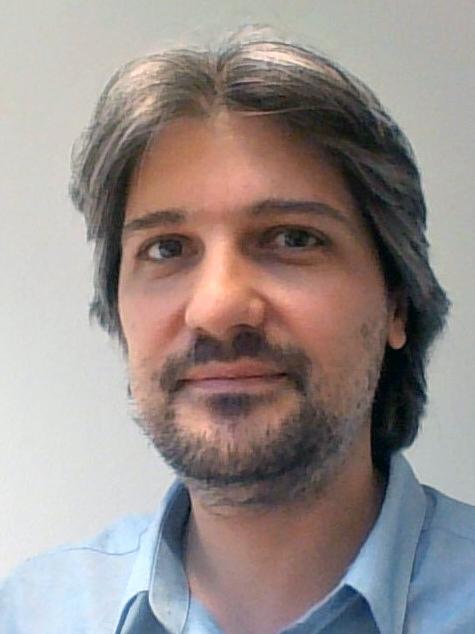Safety considerations for delivering CRISPR Cas9 medicines. Interview: Roberto Nitsch (AstraZeneca)
CMN Intelligence - The World’s Most Comprehensive Intelligence Platform for CRISPR-Genomic Medicine and Gene-Editing Clinical Development
Providing market intelligence, data infrastructure, analytics, and reporting services for the global gene-editing sector. Read more...
(Interview is condensed and edited for clarity)

- What is the main issue in safety or the main limitations going forward in CRISPR medicine?
CRISPR technology has developed very fast. In less than 10 years we have moved from an application in molecular biology to an application in the clinic. While its potential is significant, there are drawbacks of advancing a technology so fast. In my opinion, the main limitation is in proper delivery to humans, in the proper targeting and in the efficacious targeting. The CRISPR machinery can be extremely efficacious but delivery of the machinery to the right cell target in the body is still a limitation. And a delivery vector brings with it safety considerations.
- Because it is a viral vector?
I think that both viral and non-viral vectors have safety considerations. There is a common misconception that viral vectors have more safety concerns than non-viral vectors. However, there are still hurdles to overcome with non-viral delivery – for example, lipid nanoparticles can generate an inflammatory response from the host just as viral vectors can. A lot of work is going into this area and in both options we are seeing advances.
CRISPR machinery safety
- What about safety of the CRISPR Cas9 system?
There are three key safety issues related to CRISPR Cas9 that the scientific community is studying right now. First off-target and on-target rearrangements, second intrinsic immunogenicity of Cas9 and third a p53 mediated response to double strand breaks.
Understanding the safety issues is key when you want to bring a potential medicine to the clinic. Our role is first to understand as much as possible and calculate the risk and then, work to mitigate it.
Some of these, such as off-targets, can be easily mitigated with technology advancement, but you have to consider that they all come together, so you need to mitigate all of them at the same time. And that is a challenge.
- Can You describe the safety issues?
Off-target effects are when the editing is happening on another site in the DNA that is not your target site. The question here is how often and at which level it happens. When you design a potential CRISPR medicine you can minimize both the off-targeting event and the frequency using both computational and empiric approaches. This is something we are working on with experts across the world. For example, a recent publication in Science in collaboration with the Innovative Genomics Institute describes DISCOVER-Seq, a novel technique that provides a way to directly monitor CRISPR gene editing in vivo. This increases our ability to assess the safety of CRISPR.
We have also collaborated with researchers from Massachusetts General Hospital and as part of this described a new technique for predicting and detecting off-target effects of CRISPR/Cas9 gene editing in vivo, called VIVO.
p53, on-target and immuneresponse
- And for on-target, immunogenicity and p53 response?
It is important to understand that CRISPR Cas9 generates an edit (called indel) that itself is a mis-repair event. A mis-repair event not only generates the edit that you are looking for but can potentially - statistically - generate other sorts of rearrangements on-target.
“We need to develop better technologies and address the safety issues”
Immunogenicity is one of the most important safety considerations of CRISPR Cas9. Although Cas9 it is a humanized protein, it's still of prokaryotic origin and so there is a risk that it is recognized as a non-self.
The p53 mediated response is a specific response towards a DNA break and CRISPR by definition generates DNA breaks. Some cells are very sensitive to DNA breaks and can turn on unwanted responses mediated for example by p53. We know that this could potentially - and I say couldand potentiallybecause it's not been proven yet - it could potentially generate cancer transformation. That’s what people are concerned about.
- The first CRISPR medicine is predicted to be ex vivo, what is the current status?
The scientific community decide to progress CRISPR as ex vivo because it's safer. However, in recent months there’s been a shift from exploring CRISPR ex vivo towards in vivo because the effectiveness of the therapy is higher when it's in vivo. At recent conferences I’ve seen important developments of novel and better delivery vehicles - that is really good for the CRISPR community.
Curing disease by somatic editing only
- There is a lot of spot-light on CRISPR genome editing not least with the germ line editing in two babies in China, do You think there is a risk for a big public backlash?
At AstraZeneca we do not support research on germline editing.
In somatic editing, we need to address the safety issues which is why we have such a focus on this at AstraZeneca.
- How do You think best to proceed?
We need to develop better technologies and address the safety issues. This is why I'm very happy and proud of being part of a safety movement that is investigating the potential of CRISPR as a medicine that could cure disease.
- Great thank You very much.
Roberto Nitsch
Roberto Nitsch has a PhD in medical genetics and a background in mouse and cancer genetics. He is currently an associate director in the Clinical Pharmacology and Safety Science department at AstraZeneca, focusing on the safety of potential future gene therapy initiatives.
In this interview he talks about the safety aspects of delivering potential CRISPR-medicine to patients.
Tags
CLINICAL TRIALS
Sponsors:
Base Therapeutics (Shanghai) Co., Ltd.
Sponsors:
Base Therapeutics (Shanghai) Co., Ltd.







